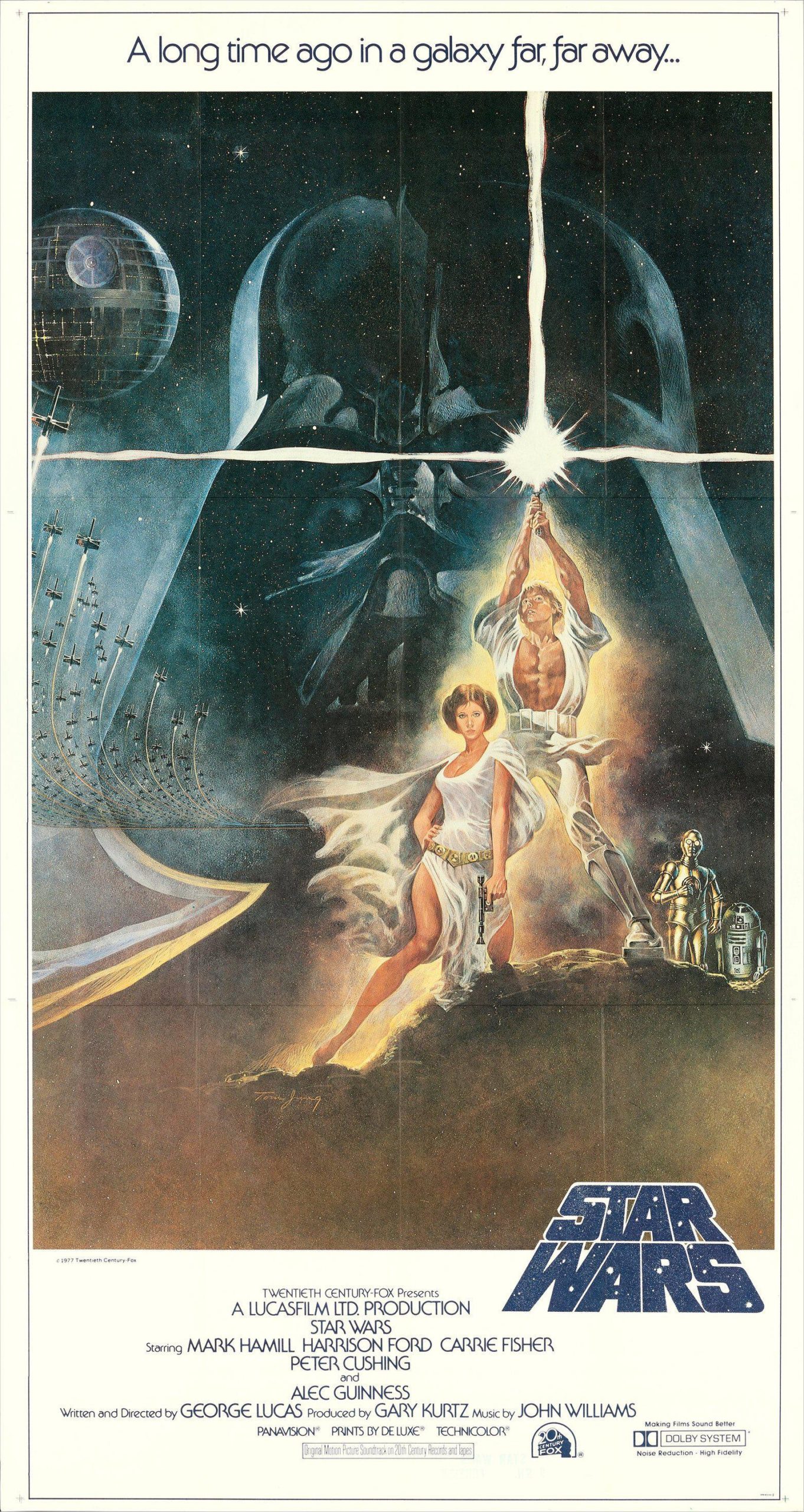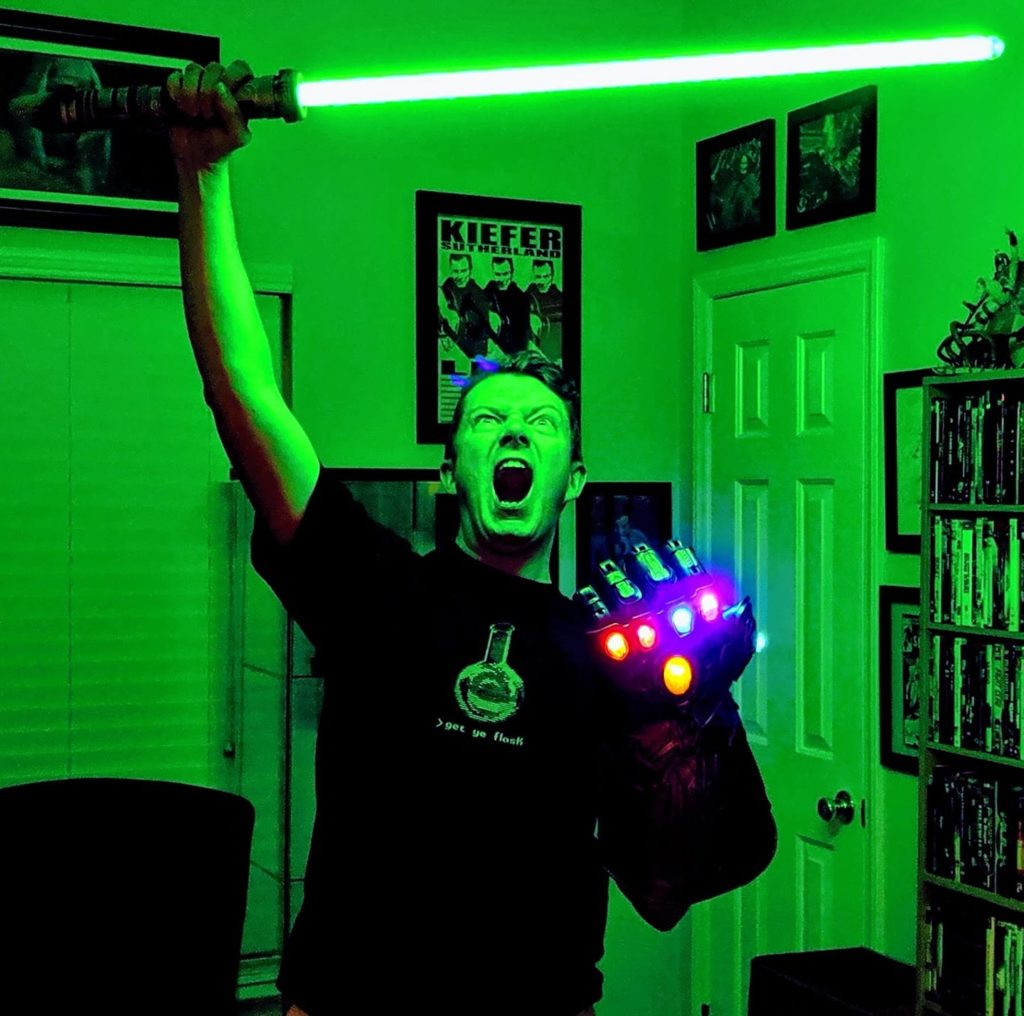
04 May Star Wars Episode IV: A New Hope
STAR WARS EPISODE IV: A NEW HOPE
dir. George Lucas, starring Mark Hamill, Carrie Fisher, Harrison Ford, and Alec Ginness
It’s hard to imagine a world without Star Wars. Having been born two years after the first film was released, I certainly can’t. But Star Wars has grown, for better or worse, into so much more than a movie series over the years. We are, almost a half-century later, constantly bombarded on all sides by Star Wars content: movies, TV series, video games, those disquieting Jar-Jar tongue lollipops from the Phantom Menace era, you name it. For a great many people, Star Wars isn’t something you watch; it’s something you live.
When something becomes this fundamental to not simply culture, but lifestyles, deviations and changes are bound to be met with disdain, or even anger, by a portion of the audience. It’s unsurprising then, although disappointing, that nowadays, part of being a “hardcore” Star Wars” fan is watching each new piece of media with at least one keen eye set on spotting the Next Big Grievance.
There is perhaps no better shorthand for this (in fact, this was likely the turning point for the original generation of Star Wars fans) than 1997’s Special Edition releases. Los Angeles’s El Capitan theater ran the original Star Wars trilogy over the weekend preceding May 4th this year. When this was announced on Twitter, the comments were woefully predictable and can be largely summed up thusly: “Yeah but are they the ORIGINAL versions?” Twenty-five years later, and people are still chomping at the bit to find a reason to be disappointed.
Much of the discourse surrounding criticism of the original Star Wars trilogy focuses on how we define “original.” Whenever anyone refers to the first three theatrically released Star Wars films as the “original trilogy,”, there will always be some pedantic goober whose pre-programmed response is, “Well, the Special Editions are HARDLY the ORIGINAL trilogy…” Thanks, you’ve added SO MUCH to this conversation. To all the people still grousing about the alterations made to the original versions of the Star Wars films, I say, “You think those changes were bad? Wait ‘til you see the ways the Earth is going to change in the next 100 years.”
Extreme? Maybe. But the point is that maybe we should stop knee-jerking our tired takes on the Special Editions, remember that we’re getting worked up over a piece of pop culture, and start asking ourselves the only question that’s ever really mattered as far as the Star Wars films are concerned: Are we entertained or not?
I can’t imagine a single Star Wars “fan” out there who will flat-out refuse to engage with any post-1977 version of the original Star Wars because it isn’t “their” definitive version. If these people exist, can they even really be Star Wars fans at this point? The original releases of the Special Editions (which have themselves been altered – repeatedly – in the years since) are 25 years old now. For many modern viewers, this has been the only version available in their lifetimes.
So this review (and the subsequent Empire and Jedi reviews) isn’t going to be a wishy-washy, forlorn look at a version that is (face it) lost to the cinematic sands of time – it’s going to look at the only question that matters: “CG Jabba be damned, is Star Wars: A New Hope as entertaining today as it was 45 years ago?”
Spoilers: the answer to that question is “Are you NUTS?? OF COURSE, it is!”
When Star Wars premiered in 1977, it was generally free of baggage. Anticipation was high – expectations weren’t. It’s hard to imagine a time where Luke Skywalker wasn’t as much a part of the American pantheon as George Washington, but putting yourself in that mindset is part of the key to appreciating that first film in whatever way you might be watching it.
The opening moments of the film are like the best first cuts on a debut album – wild, bombastic, and unforgettable. More lifelong Star Wars fans were made in the first minute and a half of the movie retroactively dubbed A New Hope than in the remaining 120 minutes combined. The shot of the Rebel Blockade Runner pursued by the seemingly endless Star Destroyer that begins the action of the film grabs the audience by the collar and says, “…you down with this?”
If the answer, as it was for so many, is, “YES GIVE ME MORE,” then congrats, you’re in. The only prerequisite for being a Star Wars fan is enjoying, to whatever degree you prefer, Star Wars.
It doesn’t matter how many times I watch the movie; I am constantly amazed by the pace and the degree to which new characters and scenarios are thrown at the viewer, and even more so that at no point is it overwhelming. Mix characters designed to be familiar archetypes with shrewd worldbuilding, effects shots that continue to impress a half-century later and editing that keeps your eyes fixed on the screen and you’ve crafted a movie that both feels like everything we’ve seen before and like nothing you’ve seen before. “First step into a much larger world” and all that.
It’s often said that Star Wars was “saved” in the editing room. Yes, the production was notoriously plagued with all manner of issues and setbacks, but I’ve always found this description to undersell the work of Paul Hirsch, Marcia Lucas, and Richard Chew (and, of course, George Lucas himself). To merely “save” the movie would’ve likely resulted in a serviceable, breezy adventure. What they did, however, brought a level of craftsmanship that created a propulsive, visually arresting experience that begged to be seen again and again.
There is perhaps no better example of the synchronicity of every department involved in the making of A New Hope than the Death Star escape sequence. Filled with fast edits, nail-biting action, some of ILM’s finest early effects work, and memorable character moments (“Great kid! Don’t get cocky!”), these three minutes closing out act II are pure and unadulterated Star Wars and still manage to keep even the most cynical fans on the edge of their seats.
I’d be remiss not to also mention John Williams’s score (which even the word “iconic” fails to do justice to). This is, simply put, not just one of the greatest score albums in cinema history, but one of the major triumphs in 20th century American orchestral compositions. The movie set thousands of wide-eyed children on the path to working in film; it’s impossible to believe that the score didn’t do the same for musicians.
Every generation has their Star Wars. That sort of ends up being the whole point of the entire saga, even as it continues today. I sat down with my four-year-old son this weekend to watch A New Hope – his first beginning-to-end viewing experience for any Star Wars film – and even though it kept him up beyond his typical bedtime, he refused to leave. He literally could not stop watching.
After it was over, I asked him, “What was your favorite part?” His response: “When they all fell in the trash.”
We all connect with Star Wars: A New Hope in our own ways. But we DO connect with it, Special Edition or not.
Review by Brian Martin


No Comments